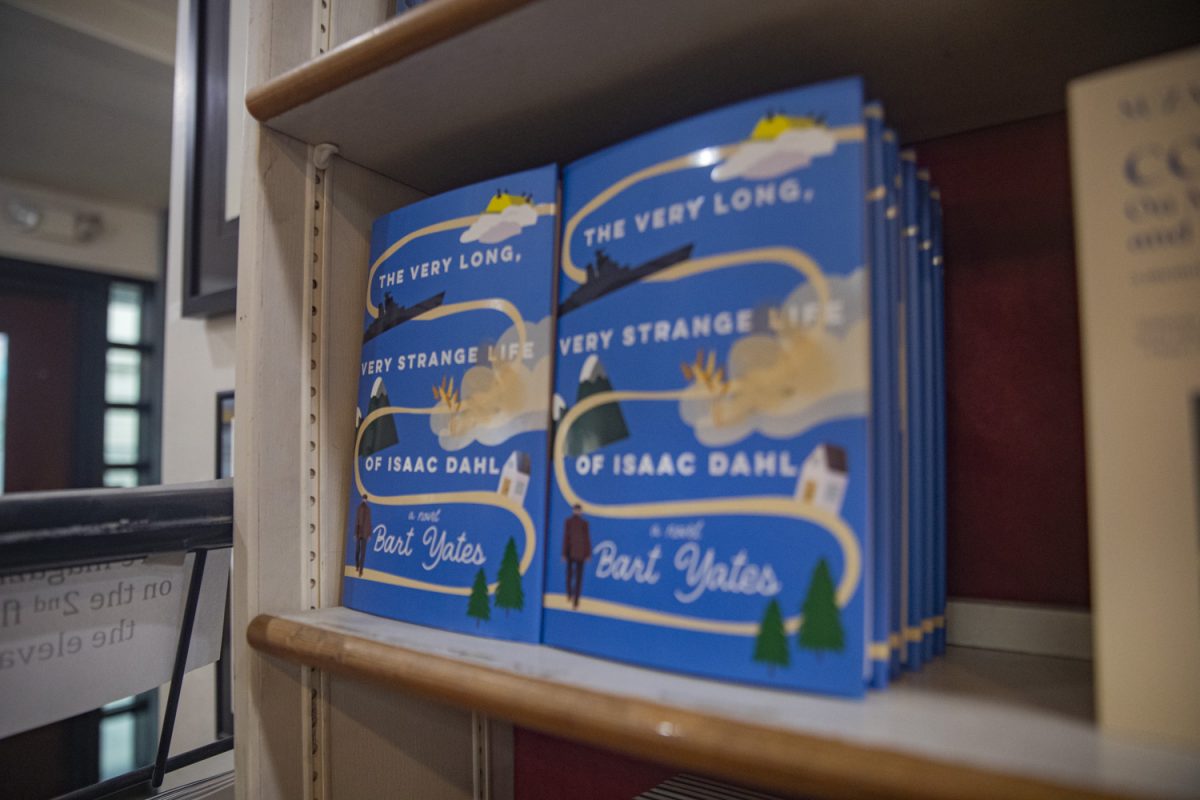Childhood is a cherished thing. The sheer power of a child’s imagination, unbridled by the harsher truths of the adulthood, can construct worlds. It’s this fertile imagination that director and playwright Sean Demers has attempted to create in his upcoming production.
At 8 p.m. Friday in 172 Theater Building, the cast and crew of Return to Mongoose Island will stage the production for the first time.
The play follows the character of Colleen, an artist who has moved through three different artistic styles: childhood drawings, landscapes, and abstract art.
"[She] struggles with a lot of issues throughout the play: the pressure of getting her work out into the world, her mother’s recent death, and a whole host of mental illness that goes along with that," said Chelsea Wing, the play’s lead actress. "So a lot of the play takes place in her mind; it deals with her memories and how she perceives those memories."
The story is presented in a non-linear fashion as Colleen navigates her memories. To help the actors better present the scenes, Demers provided the cast with linear versions of the script to make sense of Colleen’s jumbled recollections.
Demers also used somewhat unusual methods when auditioning, doing things such as bringing all of those called back into the same room and having them all say lines at once. This was done in hopes of finding an actress he believed could carry the play.
"Because of the nature of the show, I was trying to find someone who could be as natural as possible," Demers said. "In the case of Chelsea, I was very lucky to get her; she’s very talented, and I think she could very easily have been in another production. It was kind of a lucky break."
Wing will lead the audience into Colleen’s memories, in which the real and unreal collide.
Amid the physical characters, the play includes two abstract figures who act as manifestations of memory, representing Colleen and her friend as children.
"One thing that Sean mentioned early on is that he wanted to make sure that the audience is surprised," Wing said. "I think [the audience] will catch very early on that things aren’t linear, that they’re not always realistic."
Another of the director’s goals has been mixing the play’s story with a memorable visual style.
"The very first impetus of this play was, of all things, Miyazaki and some of the Imagine Theater in New York," Demers said. "They really have to use their imagination when creating shows because their space is so limited."
Acting as both playwright and director for the show has given Demers a unique opportunity to bring his work to life not only on page, but on the stage as well. He said it allowed him to dig into the play and to expound on ideas he had had while writing.
"It’s very much a memory-based play," he said. "That’s what I believe our memories work as, things occur to us moment by moment, so they’re constantly changing and shifting, and they don’t have any regard for linear time, and that’s what I wanted to play around with. And I hope that’s not confusing but that it’s very familiar."
Demers hopes that while exploring the mind and memories of his main character, he is able to spark imagination in the audience.
THEATER






